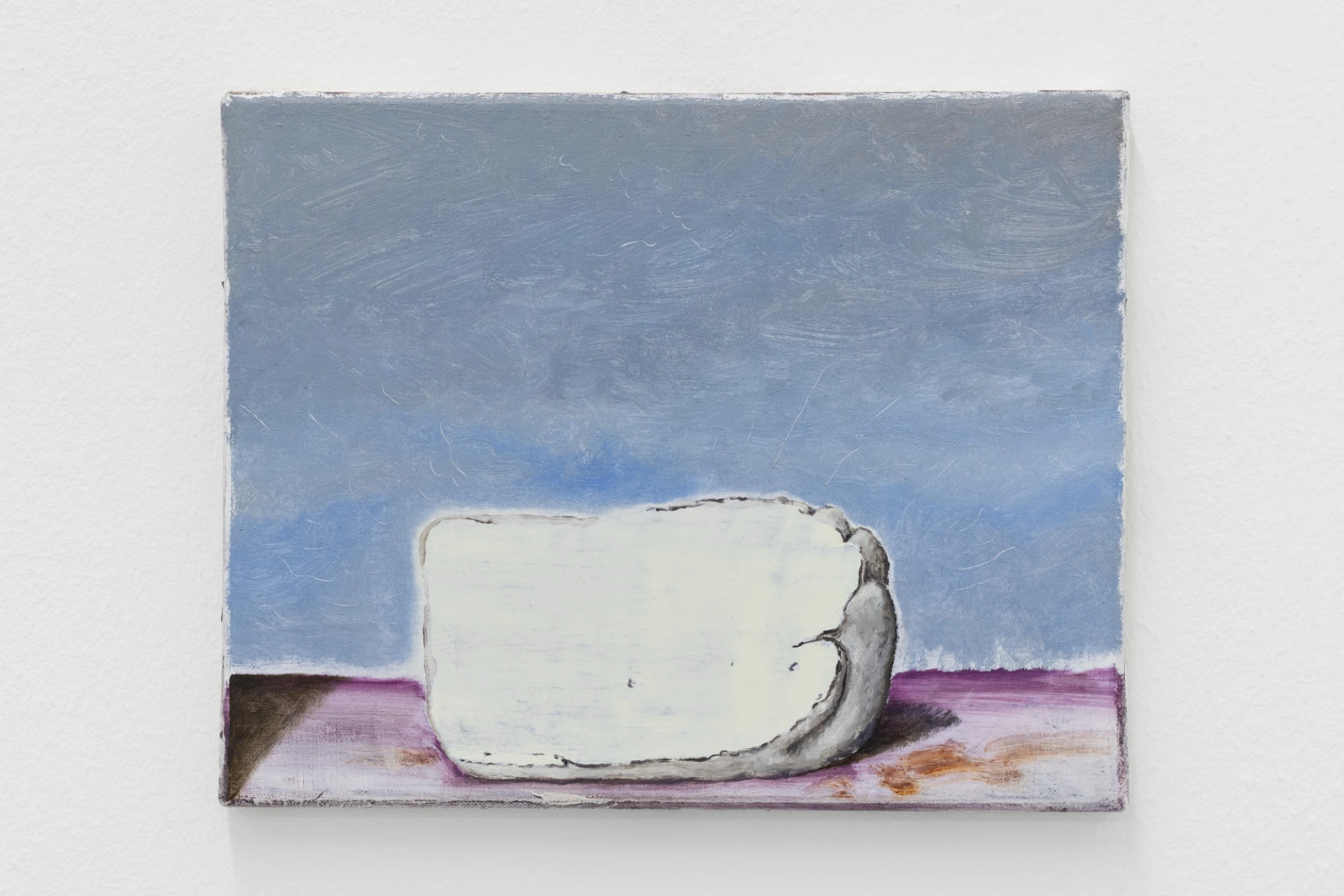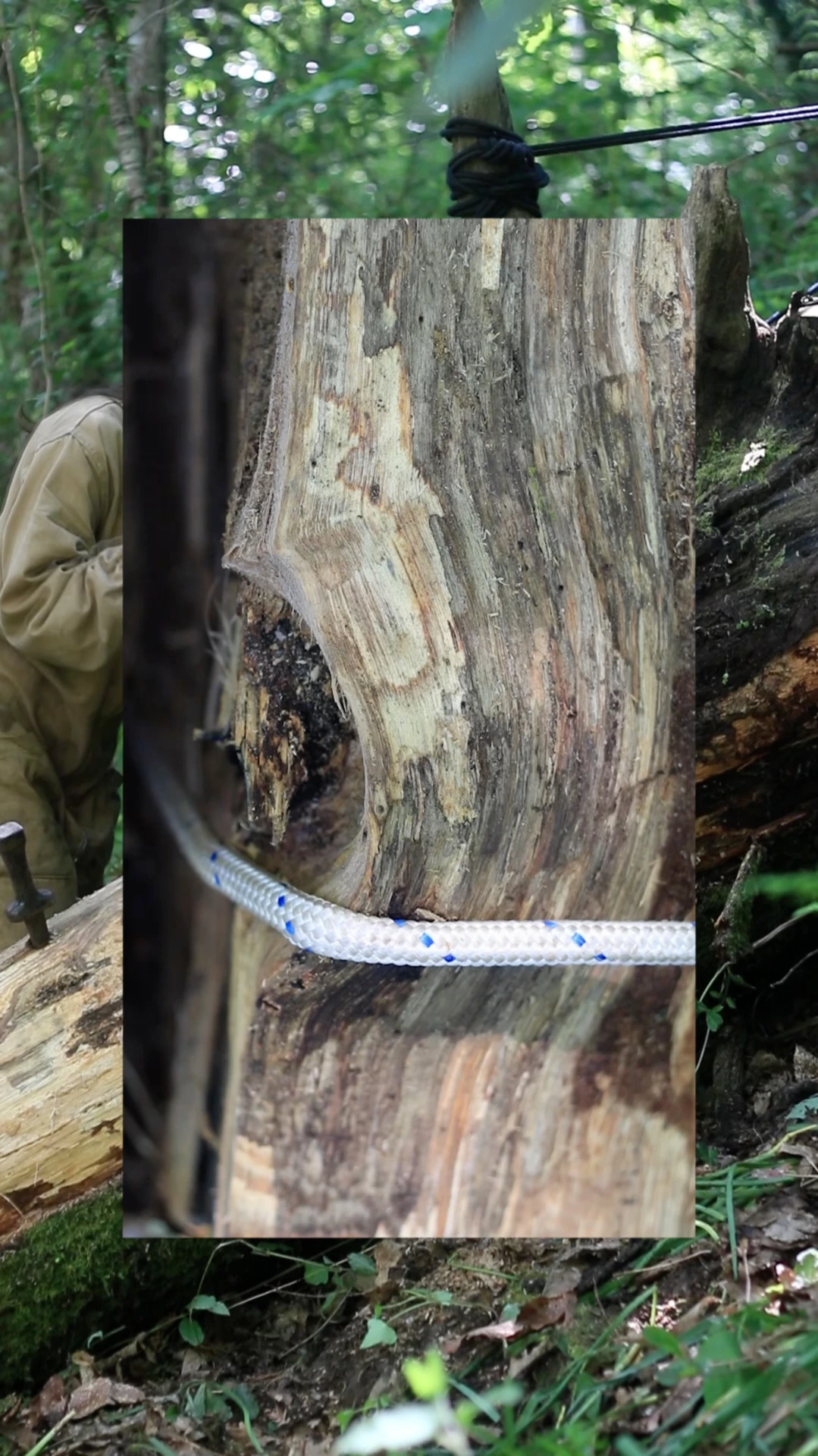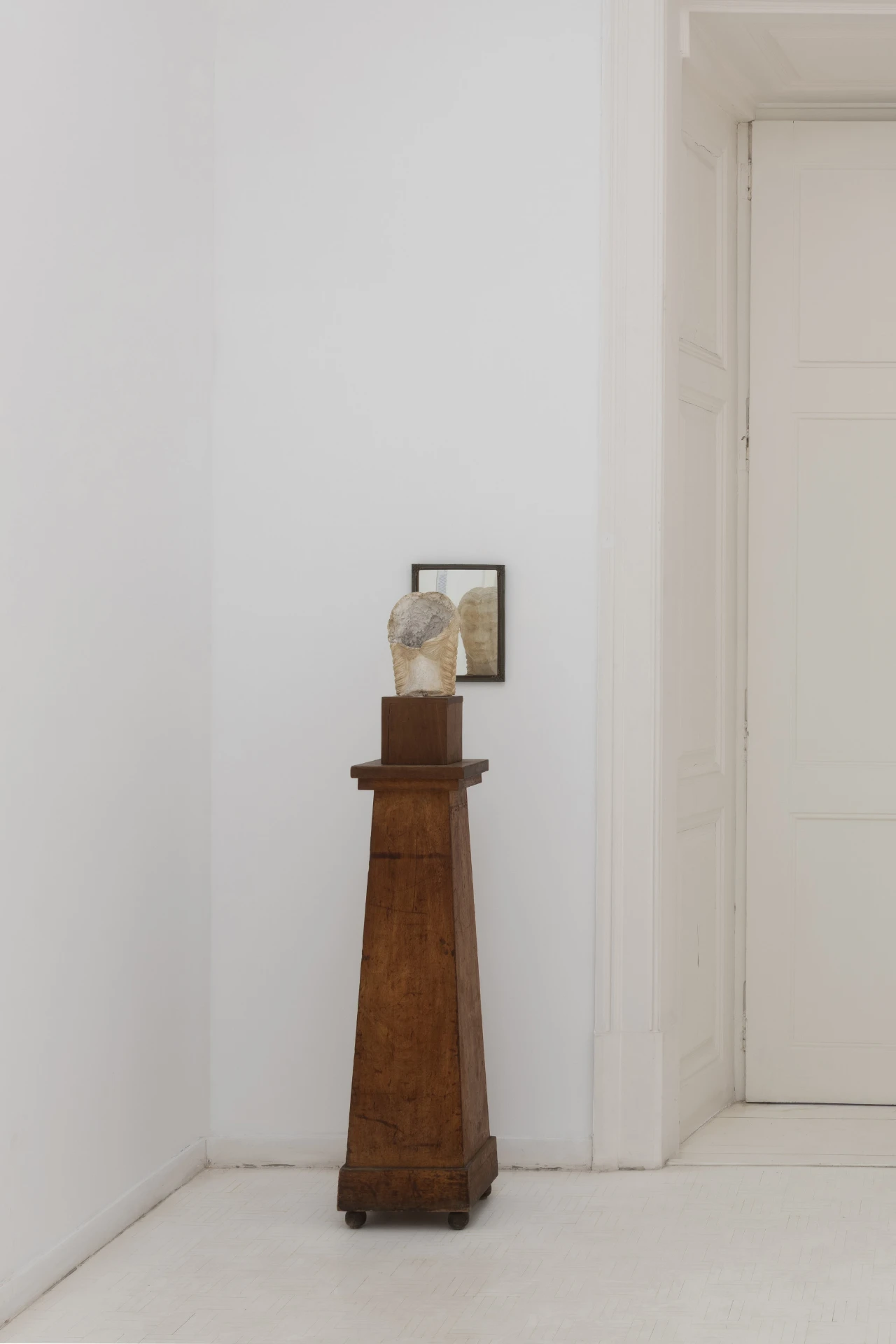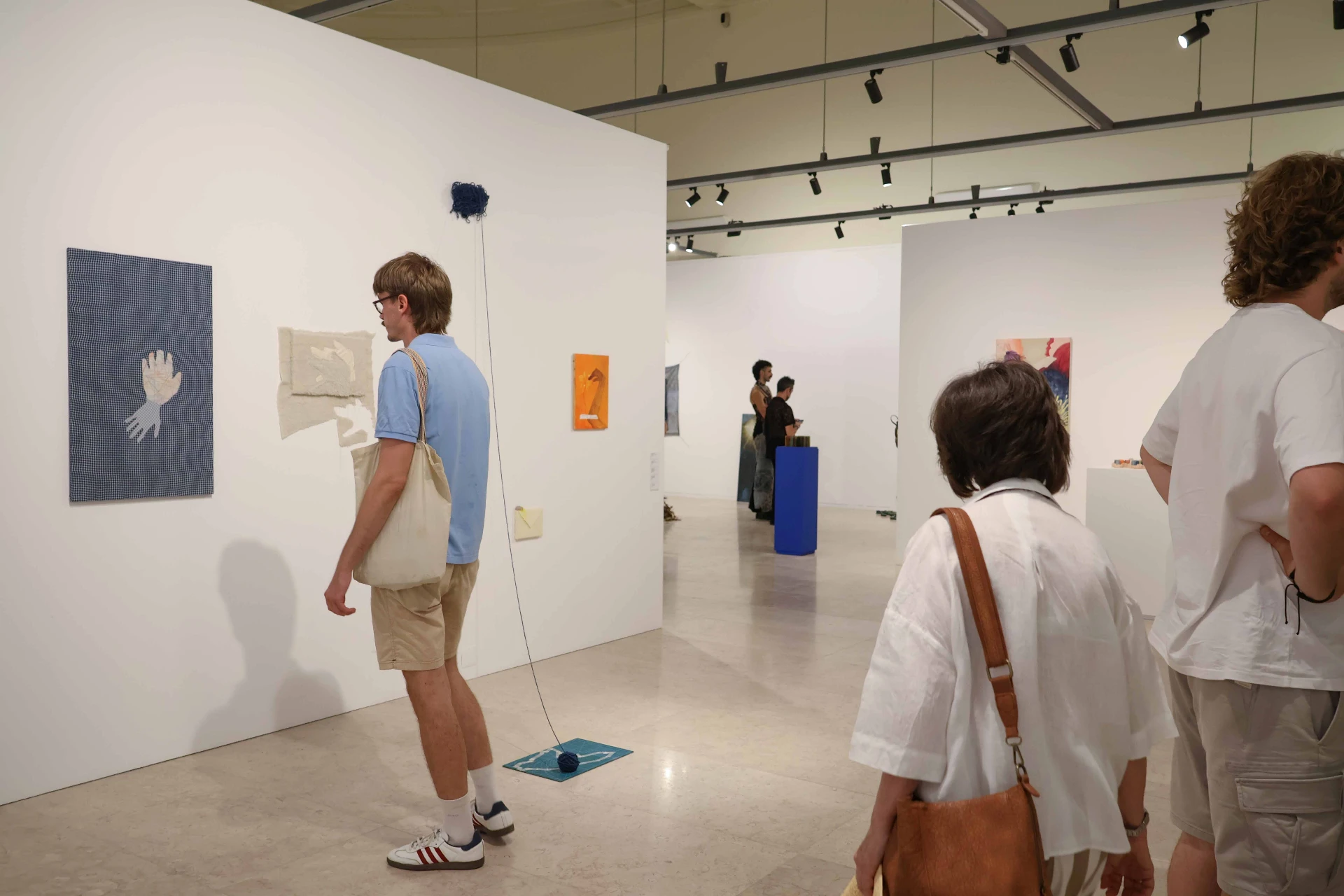article
Bands of Mercy, de Elisa Pône
When we enter Elisa Pône’s exhibition, a long “fish” with woofer eyes stretches out, taut, across the room.
Its rigidity, resulting from the effective fixation of its entire body - the sculpture is suspended from the ceiling by firm cables - gives us the impression of a floating sperm whale.
The body of the sculpture, Bands of Mercy, 2025, is a huge whirlwind made of various discarded materials1, which the artist has progressively wound around a transparent plastic screen.
The same object emits electronic noises and vibrations, emphasizing the sounds of the marine animal that the artist intentionally wanted to represent.
Elisa Pône revealed that the long, resounding piece is a tribute to Maria O’Neill, a writer born in 1873, feminist, theosophist and spiritualist.
The gallery has a display window where passersby can see the long creature trembling and rustling inside. At the same time, black and yellowish stains can be seen outside, on the gallery's glass. The artist painted the display window with coloured smoke, commonly used at sporting events.
Coloured smoke is yet another of the pyrotechnic resources that the artist uses. Pône is interested in the sound and visual properties of pyrotechnics, which, intense and vibrant, mash up vanity and spectacle in time2. But the artist is also interested in the processes and materials involved in pyrotechnics, the combustion, its ashes, the various elements that compose it and which the artist materializes using paper, glass, laminated PVC sheet, paraffin wax, coloured pyrotechnic wick, cigarette butts, silicone and latex3.
In 2013, the artist was already creating works such as Chromo-combustibles, combining smoke bombs with simple geometric figures4. According to Marie Bechetoile: Form, colour and their use overlap, a renewed alliance between the controlled and the unpredictable. Actions, effects, sequences and recordings. Abstraction and figuration move in the same direction5. In an earlier work, the video triptych À la fuite (on the run, 2012), time passes in three portraits: the slow burning of a cigarette, the erratic gait of a hiker, the dynamic oscillation of a motorized scooter. Narratives without beginning or end, in which the singular perception of the present is captured6.
On the gallery walls, resin pieces from the Insert (2023) series are fixed, like the pieces on display in the exhibition LA TROISIÈME NUQUE THE THIRD NAPE7.
On these transparencies you can also find an assemblage of discarded materials, the most common: a dance of confetti, small gold-coloured spheres, silver straps, beads, glitter, faded instant photographs, plastic eyes, cigarette butts, matches, rattles, used rocket cartridges, electronic fragments, fabric ribbons.
Pône usually uses translucent supports. In a fluid way, the artist can work with different media and formats. Sound, installation, sculpture, and painting are some of the media she works with. The artist also uses video. The intense film, Os Estimados, filmed inside a dog shelter, reveals the lives of the little animals in a space where they are protected and await an opportunity to be taken in by a family. According to the artist: Os Estimados expresses the complexity of a closed space. Filmed in a dog shelter, the camera lens partially covered by a mirror offers us the gift – if not the dysfunction – of a double vision, as if we had eyes in the back of our heads. In this work, the artist offers architectural plans that refer us to great contrasts. In an urban environment, the artist accentuates the social discrepancies that are easily exposed in the city.
Pône is a multifaceted and multidisciplinary artist who is also concerned about social issues. The way the artist talks about Maria O’Neill and tells the story of the writer’s life reveals the major causes that have a bearing on her, such as the environment, women’s issues, and social disparities.
1 This long work is morphologically similar to another, smaller piece, the ROULÉ SERRÉ, CHAND TREMPÉ piece.
2 Bechetoille, M. (2014) https://michelrein.com/cspdocs/exhibition/files/ElisaPone_CP_ENG.pdf
3 Ibidem
4 Ibidem
5 Ibidem
6 Ibidem
7 https://www.elisapone.com/infos
BIOGRAPHY
Carla Carbone was born in Lisbon, 1971. She studied Drawing in Ar.co and Design of Equipment at the Faculty of Fine Arts in Lisbon. Completed his Masters in Visual Arts Teaching. She writes about Design since 1999, first in the newspaper O Independente, then in editions like Anuário de Design, arq.a magazine, DIF, Parq. She also participates in editions such as FRAME, Diário Digital, Wrongwrong, and in the collection of Portuguese designers, edited by the newspaper Público. She collaborated with illustrations for Fanzine Flanzine and Gerador magazine.
ADVERTISING
Previous
article

12 Jun 2025
Held in tension: Anatomy of the machine-body
By Dela Christin Miessen
Next
article
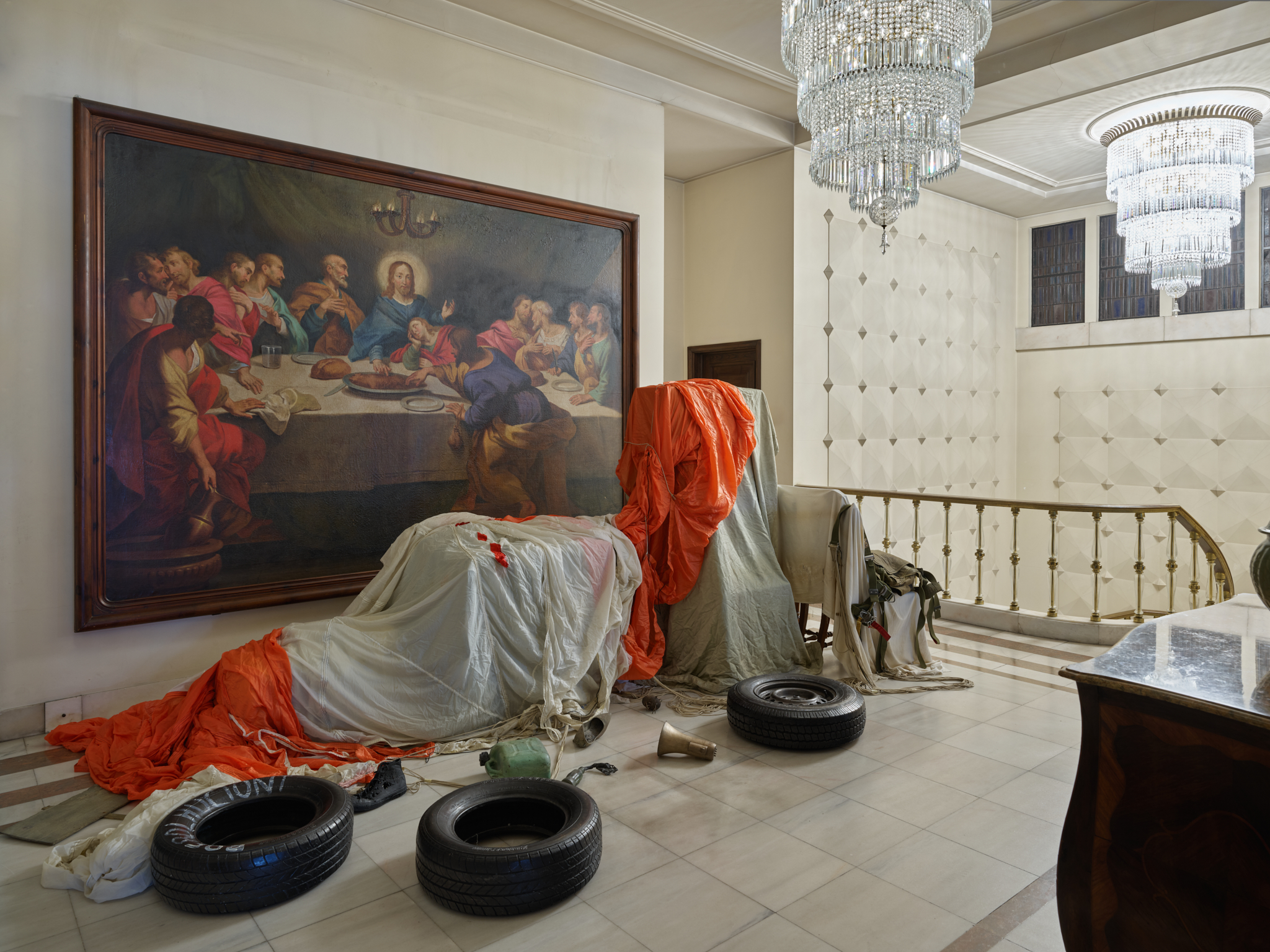
18 Jun 2025
‘Somos Todos Capitães’
By Mariana Machado
Related Posts
